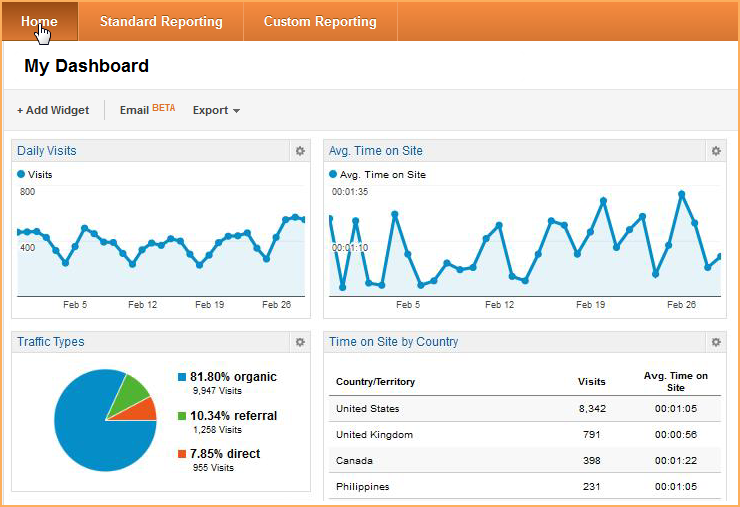Using case studies and analytics from our own clients over the years we have come up with our own short list of SEO rules of thumb.
1) Be interesting. Since your goal is to make a sell, your content needs to inspire confidence in your prospect. Before you can inspire confidence you need to be interesting. The translation for be interesting on the internet usually means include more compelling pictures on your pages. We call these pages anchor pages, because they are always present in the group of pages that lead to a sale. You will also notice in your analytics that these anchor pages always have a low bounce rate (under 40%) and a high average time on page (greater than three minutes). Ironically these anchor pages often DO NOT include a high word count or a high concentration of keywords which is generally how Google determines how to rank and categorize your web pages on the Internet.
2) Understand your web traffic patterns and your customers buying cycle. Depending on how much your products sell for, your prospects may take days, weeks, or months to make their buying decision. A common trend we see in the analytics of products in the $500 plus price range, is that prospects return several times before making a purchase. This means by the time they buy they are either coming directly to your website or searching on your company name/website name. Either way this creates a big problem if you are trying to decide which search terms are worth targeting in your SEO content strategy. In this scenario, it is a good idea to study the group of pages looked at by the buyer, prior to the sale. Remember, not all of these pages will be keyword centric...some will be picture centric.
3) Look closely at your online and off-line competition. Most buyers are looking for a good deal, a fair deal, or a bargain. It is important that you know how your products are priced, displayed and promoted compared to your competition. As an online retailer it is important to remember that buyers have a choice and they are going to buy from you, or from your competition. If your sales are down, your competition should be the first place you look to figure out where you need to make adjustments. It doesn't matter how good your SEO ranking is if your competitors have better pricing, better product displays or better promotions.
4) Always work backwards from the sale. When you analyze your Google analytics conversions you will likely notice a few things about the search terms contributing to your sales. First of all you will notice that almost all of the search terms are very different from each other and contain multiple attributes, e.g. size, dimensions, color, type, material, and brand. You will also notice that the generic category search terms which often account for most of your web traffic are conspicuously absent from the list of search terms that are converting. Although this is often a source of frustration for optimizing website traffic that converts, it also outlines a common buying pattern prospects use when shopping for products on the web. They start with a general search or search on the category to discover which subcategories are available, then they search again on the subcategory closest to what they are looking for, then they see which brands and types are available, then they search again for the brand, product type, dimensions, color and other attributes to discover which online and offline stores have the best prices and deals. Then they narrow the list down to two or three sites, check on shipping costs and finally make a purchase.
5) Return web traffic converts better and spends more than first time visitors. Google has been know to give advice which at first glance appears to be no help at all. One of their more famous statements is to "create great content" and they will do the rest in terms of categorizing where and when to serve up your content. However when seen in the context that prospects continually refine their searches before they buy and visit multiple pages on your website before they buy, it makes a lot of sense because "great content" helps to bring visitors back to your website...and return visitors convert and spend at least double what the average visitor does.
Learn more about search engine marketing using Google, Bing and Yahoo's pay per click ads.

